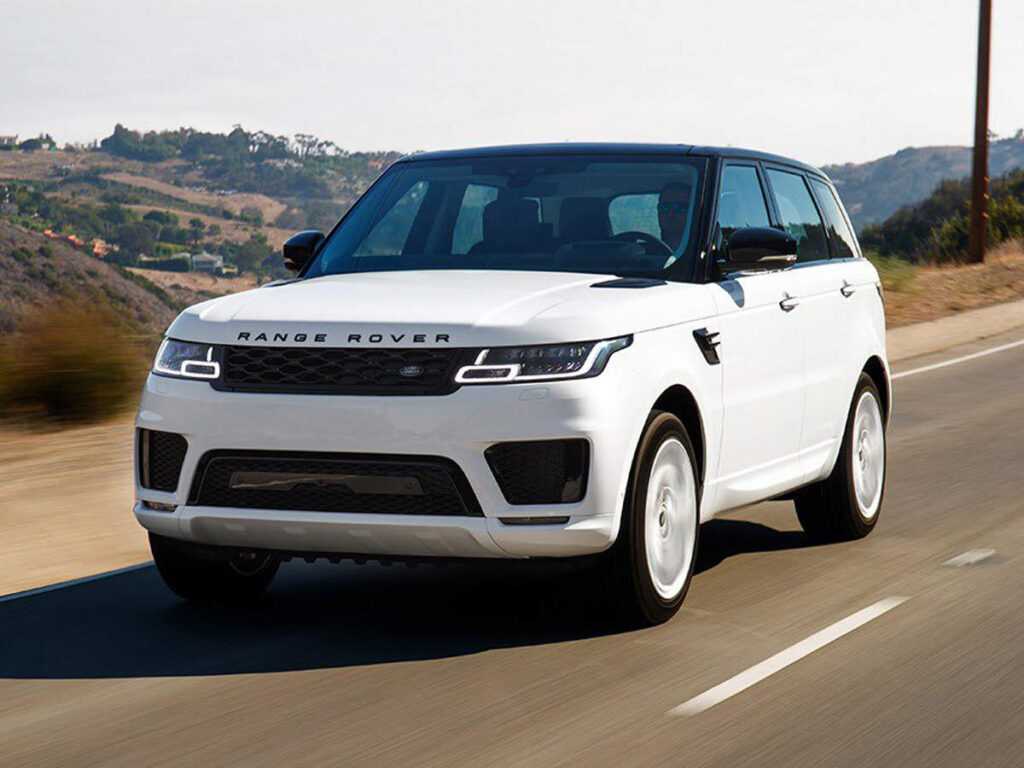


فوارهها یکی از جذابترین اختراعات انسان در طول تاریخ بودهاند. این اختراعات به عنوان ابزارهایی برای تأمین آب، زیباسازی محیط، و حتی نمادی از قدرت و هنر استفاده شدهاند. در این مقاله به بررسی تاریخچه، انواع، کاربردها و اهمیت فوارهها خواهیم پرداخت و از منظر هنری، علمی و فرهنگی به موضوع نگاه میکنیم.
۱. تاریخچه فوارهها
فوارهها تاریخچهای طولانی و غنی دارند که به تمدنهای باستانی بازمیگردد. نخستین فوارهها در تمدنهای بینالنهرین و مصر باستان ساخته شدند. در این دورهها، فوارهها به عنوان سیستمهای آبرسانی برای کشاورزی و تأمین آب مورد استفاده قرار میگرفتند. بعدها، در دوران روم باستان، فوارهها به نمادی از قدرت و عظمت امپراتوری تبدیل شدند. رومیها از فناوریهای پیشرفتهای مانند قناتها و سیستمهای آبیاری برای ساخت فوارههای عمومی استفاده میکردند.
در دوران رنسانس، فوارهها به اوج زیبایی و خلاقیت خود رسیدند. فوارههای کاخ ورسای در فرانسه یکی از معروفترین نمونهها از این دوران هستند. این فوارهها نه تنها کارکردی عملی داشتند، بلکه به عنوان نمادهای زیبایی و هنر نیز شناخته میشدند.
۲. انواع فوارهها
فوارهها بر اساس طراحی، کارکرد و مکان استفاده به دستههای مختلفی تقسیم میشوند:
الف) فوارههای تزئینی
این نوع فوارهها بیشتر در پارکها، میدانهای شهری و باغها دیده میشوند. طراحی آنها اغلب شامل مجسمهها، نورپردازی و افکتهای آب است.
ب) فوارههای صنعتی
این فوارهها برای کاربردهای خاصی مانند خنکسازی در صنایع یا کنترل گردوغبار استفاده میشوند.
ج) فوارههای طبیعی
فوارههای طبیعی، مانند آبفشانها (چشمههای گرم)، به دلیل پدیدههای زمینشناسی شکل میگیرند و جذابیت خاصی دارند.
د) فوارههای موسیقیایی
این فوارهها با ترکیب موسیقی، نور و حرکت آب، تجربهای چندحسی برای تماشاگران ایجاد میکنند.
۳. فناوری پشت فوارهها
در گذشته، فوارهها به وسیله نیروی گرانش و سیستمهای ساده آبرسانی کار میکردند. اما امروزه فناوریهای مدرنی مانند پمپهای فشار قوی، برنامهریزی رایانهای و سیستمهای الکترونیکی امکان ساخت فوارههای پیچیدهتری را فراهم کردهاند.
سیستمهای پمپاژ
پمپهای مورد استفاده در فوارهها از نوع پمپهای سانتریفیوژ یا دیافراگمی هستند که جریان آب را به صورت یکنواخت و با فشار بالا تأمین میکنند.
سیستمهای کنترل
فوارههای مدرن از برنامههای کامپیوتری برای تنظیم جریان آب، نور و موسیقی استفاده میکنند. این سیستمها امکان ایجاد نمایشهای دیدنی و هماهنگ را فراهم میکنند.
۴. فوارهها و هنر
فوارهها همیشه بخشی جداییناپذیر از هنر و معماری بودهاند. بسیاری از فوارههای مشهور جهان توسط هنرمندان و معماران برجسته طراحی شدهاند. به عنوان مثال، فواره “تروی” در رم یکی از شاهکارهای معماری باروک است.
طراحی و مجسمهسازی
بسیاری از فوارهها شامل مجسمههای تاریخی یا افسانهای هستند که داستانها و نمادهای خاصی را منتقل میکنند.
نورپردازی
نورپردازی در فوارهها یکی از جنبههای مهم طراحی مدرن است. این عنصر میتواند زیبایی فوارهها را در شب دوچندان کند.
۵. فوارهها در فرهنگ و تاریخ
فوارهها در بسیاری از فرهنگها نمادی از پاکی، حیات و تجدید بودهاند. در فرهنگ اسلامی، آب و فوارهها در طراحی باغها و مساجد اهمیت خاصی دارند. باغ فین کاشان یکی از نمونههای برجسته استفاده از فوارهها در معماری ایرانی است.
در اروپا، فوارهها به عنوان نمادی از ثروت و قدرت استفاده میشدند. در چین و ژاپن، فوارهها بخشی از طراحی باغهای سنتی بودند و نمادی از هماهنگی با طبیعت محسوب میشدند.
۶. نقش فوارهها در محیطزیست
فوارهها میتوانند تأثیرات مثبت و منفی بر محیطزیست داشته باشند. از یک سو، فوارههای طبیعی میتوانند زیستگاههایی برای گونههای مختلف جانداران ایجاد کنند. از سوی دیگر، فوارههای مصنوعی ممکن است مصرف آب و انرژی زیادی داشته باشند.
برای کاهش تأثیرات منفی، امروزه از فناوریهای پایدار مانند سیستمهای بازیافت آب و انرژیهای تجدیدپذیر در ساخت فوارهها استفاده میشود.
۷. نمونههایی از فوارههای معروف جهان
فواره تروی (Trevi Fountain) – ایتالیا
این فواره باروک در رم یکی از معروفترین فوارههای جهان است و سالانه میلیونها گردشگر را جذب میکند.
فوارههای دبی (Dubai Fountain) – امارات متحده عربی
این فواره موسیقیایی در مرکز شهر دبی قرار دارد و یکی از بزرگترین فوارههای جهان محسوب میشود.
فوارههای کاخ ورسای – فرانسه
این مجموعه فوارهها از شاهکارهای طراحی باغهای کلاسیک فرانسوی هستند.
فواره میدان استقلال – تهران
این فواره که در مرکز میدان استقلال تهران قرار دارد، از نمونههای مدرن فوارهسازی در ایران است.
۸. چالشها و آینده فوارهها
فوارهها با چالشهایی مانند مصرف زیاد آب، نیاز به نگهداری مداوم و هزینههای بالا مواجه هستند. اما با استفاده از فناوریهای مدرن و پایدار، میتوان این چالشها را کاهش داد و فوارههایی سازگار با محیطزیست طراحی کرد.
در آینده، انتظار میرود که فوارهها به ابزارهایی هوشمند و چندمنظوره تبدیل شوند که علاوه بر زیباسازی، بتوانند به حل مشکلاتی مانند تصفیه آب و تهویه هوا کمک کنند.
نتیجهگیری
فوارهها نه تنها سازههایی زیبا و هنری هستند، بلکه نقش مهمی در فرهنگ، تاریخ و حتی محیطزیست دارند. از فوارههای باستانی تا شاهکارهای مدرن، این سازهها همواره نمادی از خلاقیت و نوآوری انسان بودهاند. با پیشرفت فناوری، فوارهها همچنان به تکامل خود ادامه خواهند داد و به عنوان نمادی از هماهنگی میان هنر و علم باقی خواهند ماند.
Fountains: A Comprehensive Exploration
Fountains have captivated human imagination for centuries, blending art, engineering, and culture into one remarkable creation. From their origins in ancient civilizations to their modern forms, fountains have served as sources of water, symbols of wealth, expressions of art, and marvels of engineering. This comprehensive essay delves into the history, types, technology, cultural significance, and future of fountains, offering a detailed exploration of their multifaceted nature.
۱. The History of Fountains
Ancient Beginnings
The history of fountains traces back to ancient civilizations like Mesopotamia, Egypt, and the Indus Valley. Early fountains were primarily functional, designed for irrigation and water supply. These rudimentary systems utilized gravity to channel water from rivers or springs into towns and fields.
The Egyptians constructed simple fountains near temples and palaces, often incorporating water into their religious and social practices. Similarly, Mesopotamian ziggurats sometimes featured water elements that symbolized prosperity and life.
Roman Engineering Marvels
The Romans revolutionized fountain design through advanced aqueducts and plumbing systems. Fountains became public amenities and expressions of Roman grandeur, with water flowing freely into communal baths, homes of the wealthy, and city squares. Iconic examples include the Fontana delle Tartarughe (Fountain of the Turtles) and the elaborate nymphaea, monumental fountain structures adorned with statues and reliefs.
The Middle Ages
With the fall of the Roman Empire, fountain development slowed. However, in medieval Europe, monasteries used small fountains for spiritual and practical purposes, emphasizing simplicity and harmony.
Renaissance Flourish
The Renaissance rekindled interest in fountains, combining art with hydraulic engineering. In Italy, especially, fountains became central to urban design and private estates. Masterpieces like the Trevi Fountain in Rome and the fountains of Villa d’Este in Tivoli reflect this period’s artistic brilliance.
Modern Era
By the 19th and 20th centuries, fountains evolved from symbols of power and wealth into public artworks and engineering marvels. Today, they integrate cutting-edge technology, offering interactive, illuminated, and music-coordinated displays.
۲. Types of Fountains
Fountains are diverse in design and function, ranging from traditional installations to innovative modern creations. Below are some prominent types:
Decorative Fountains
Decorative fountains are designed primarily for aesthetic appeal. They are often seen in parks, gardens, and public squares, showcasing intricate designs, sculptures, and water patterns.
Drinking Fountains
These practical installations provide clean, potable water in urban areas, schools, and parks, emphasizing functionality over ornamentation.
Musical Fountains
Musical fountains combine water jets with music and lights, creating synchronized performances. Famous examples include the Dubai Fountain and Bellagio Fountains in Las Vegas.
Industrial Fountains
Used in industries, these fountains serve specific purposes, such as cooling machinery, reducing dust, or oxygenating water bodies.
Natural Fountains
Natural fountains, like geysers, occur due to geological processes. Examples include Old Faithful in Yellowstone National Park.
Interactive Fountains
Interactive fountains invite public engagement, often seen in urban plazas where people can walk or play among the water jets.
۳. The Science and Technology Behind Fountains
Modern fountains owe their success to advancements in engineering and technology.
Water Pressure and Gravity
Early fountains relied on gravity to generate water flow, with elevated reservoirs ensuring constant pressure. Today, electric pumps have replaced these systems, enabling fountains to reach impressive heights.
Hydraulic Systems
Hydraulic engineering plays a crucial role in controlling water flow and pressure in modern fountains. Valves, pipes, and nozzles are meticulously designed to create specific water effects, from mist-like sprays to powerful streams.
Lighting Technology
LED lighting has transformed fountain displays, offering vibrant, energy-efficient illumination. Programmable light sequences enhance the visual appeal, especially in night-time displays.
Computerized Controls
Advanced fountains use computerized systems to synchronize water jets, lights, and music. These systems allow for precise control over timing and patterns, resulting in mesmerizing shows.
۴. Fountains and Art
Fountains are as much about art as they are about engineering. Their design often incorporates elements of sculpture, architecture, and landscape design.
Sculptural Elements
Fountains frequently feature statues and carvings that reflect cultural, historical, or mythological themes. For instance, the Trevi Fountain showcases Neptune surrounded by allegorical figures.
Landscape Integration
In gardens, fountains are designed to harmonize with the natural surroundings. Japanese garden fountains, for example, emphasize simplicity and tranquility.
Cultural Symbolism
Fountains often carry deep cultural and symbolic meanings. In Islamic gardens, fountains represent paradise, while in European traditions, they symbolize power and abundance.
۵. Fountains in Culture and History
Fountains have held a special place in various cultures throughout history:
Islamic Gardens
In Islamic culture, water is a symbol of purity and life. Fountains were central to the design of Persian and Mughal gardens, such as those at the Taj Mahal.
European Grandeur
In Europe, fountains became symbols of power during the Renaissance and Baroque periods. Monarchs like Louis XIV of France commissioned grand fountains, such as those at Versailles, to display their authority and wealth.
Modern Urban Spaces
Today, fountains serve as landmarks and gathering points in cities worldwide. They provide spaces for relaxation and community engagement, enhancing urban life.
۶. Environmental Impact of Fountains
Fountains, while beautiful, can have environmental implications:
Water Consumption
Fountains can consume large amounts of water, particularly in arid regions. Modern designs often include recirculation systems to minimize wastage.
Energy Use
Pumps and lighting systems require significant energy. Solar-powered fountains are becoming increasingly popular as a sustainable alternative.
Biodiversity
In natural settings, fountains can support biodiversity by oxygenating water and providing habitats for aquatic life.
۷. Iconic Fountains Around the World
Trevi Fountain (Italy)
This Baroque masterpiece in Rome is one of the world’s most famous fountains, attracting millions of visitors annually.
Dubai Fountain (UAE)
Located in Dubai, this fountain features water jets reaching heights of 150 meters, synchronized with music and lights.
Bellagio Fountains (USA)
These iconic fountains in Las Vegas perform intricate shows choreographed to music, making them a top tourist attraction.
Versailles Fountains (France)
The fountains at the Palace of Versailles are a testament to French landscape artistry and engineering.
۸. Challenges and the Future of Fountains
Fountains face several challenges, including maintenance costs, water scarcity, and energy consumption. However, technological advancements are paving the way for more sustainable designs.
Innovations in Sustainability
Eco-friendly fountains now utilize solar power, rainwater harvesting, and efficient pumps to reduce their environmental footprint.
Smart Fountains
The integration of IoT (Internet of Things) allows fountains to adapt to environmental conditions, optimizing performance and reducing waste.
Conclusion
Fountains are timeless creations that bridge the gap between art, engineering, and culture. From their ancient roots to modern innovations, they continue to inspire and delight people around the world. As technology advances, fountains are poised to become even more sustainable and interactive, ensuring their relevance for generations to come.





















































